There is symbolism in Dior’s new address. The corner of 57th Street and Madison sits near where Christian Dior set up the brand’s U.S. subsidiary in 1948. The return reads as a deliberate line back to origin, not nostalgia, but a reminder that Paris and New York have long influenced each other’s idea of taste.
Architect Peter Marino’s flagship is scaled for Manhattan yet designed for a slower gaze. A stone facade with monumental windows draws in daylight that eases across soft-toned rooms. Underfoot, Versailles parquet gives a tactile whisper, crisp and familiar, a counter to the city’s noise outside. The boutique stacks the worlds of Dior across four levels: women’s and men’s ready-to-wear, leather goods, accessories, jewelry, watches, perfumes and Dior Maison. The arrangement favors discovery over spectacle. You look, you move, you notice.
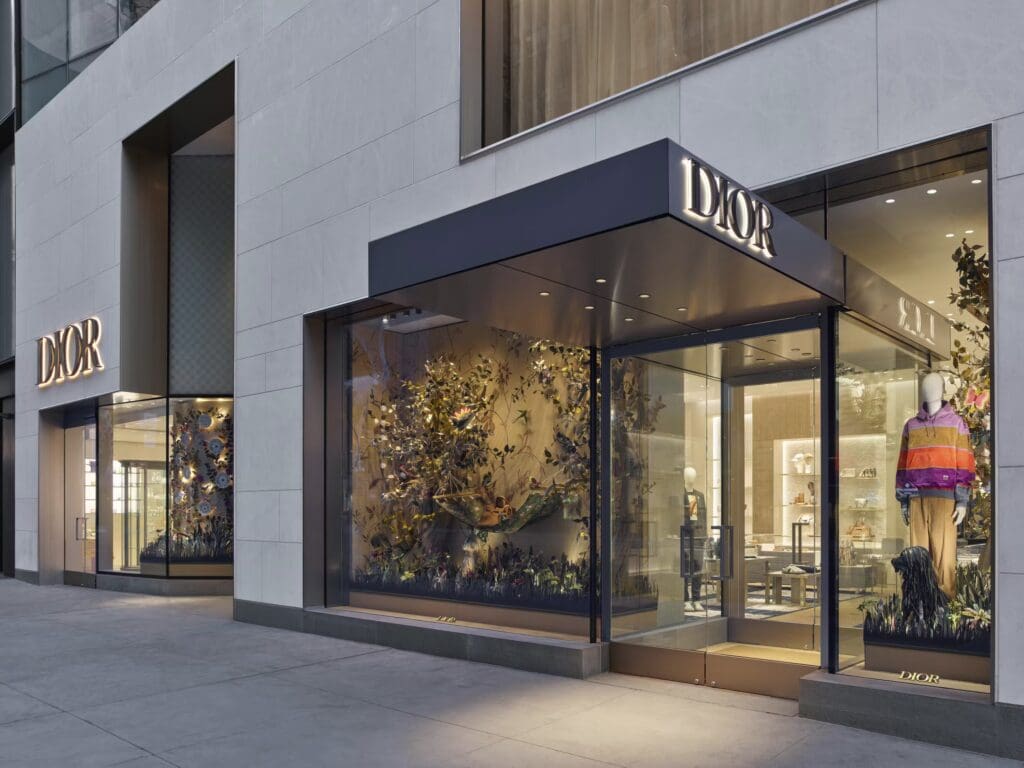
Art and craft are not afterthoughts here. A garden by landscape architect Peter Wirtz brings a calm, green pause that softens the marble and glass. The Colorama staircase spirals as a narrative device, its hues mapping Dior’s objects of desire through time. It is a rare retail gesture that educates while it seduces, more museum cue than marketing ploy. The atmosphere is clean rather than grand, closer to a collector’s apartment than a department store. There is room to exhale.
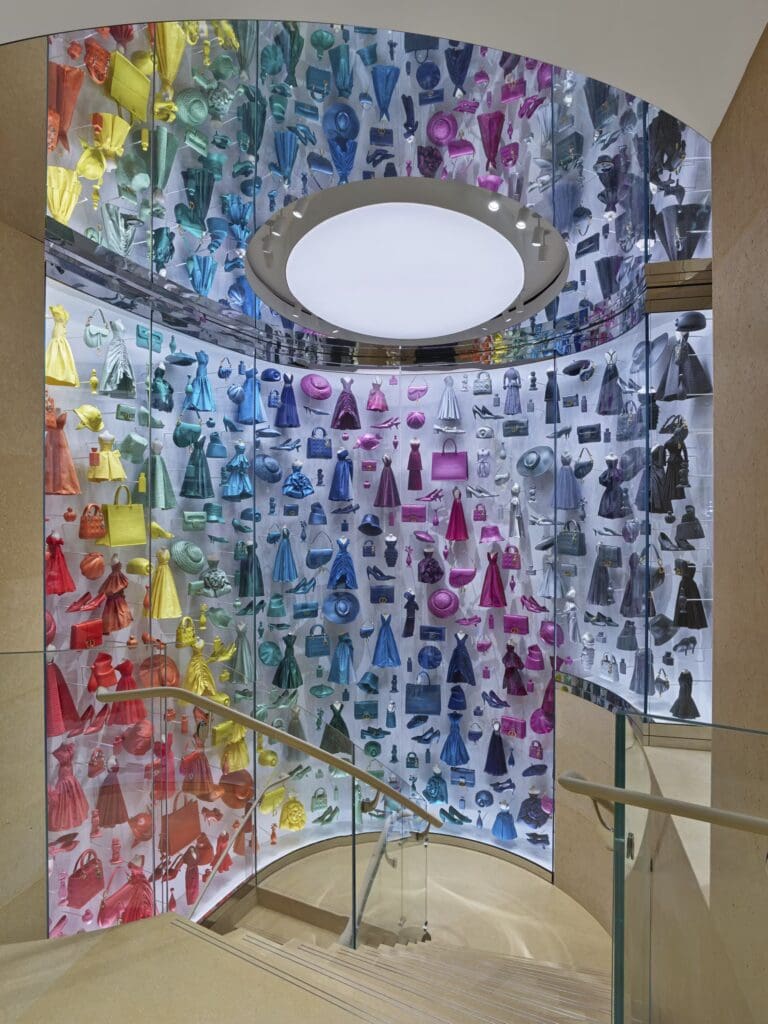
Exclusivity exists, of course, but it is more varied than the predictable handbag line. Artist Anna Weyant’s reinterpretation of the Lady Dior sits like a conversation between canvas and leather. Millefiori and Blue Jardin de Dior motifs appear on garments, floral without fuss, more pattern than perfume. The Bois de Rose jewelry line adds pieces set with precious gemstones, a precise riff on a house code rather than a shout. For men, a new variation of the B27 sneaker arrives in a run of 47 pairs. The number will pull collectors, though the micro-drop format is a familiar move across luxury now. Special Dior Maison objects round out the mix, the kind of home pieces that can nudge a room without announcing themselves.
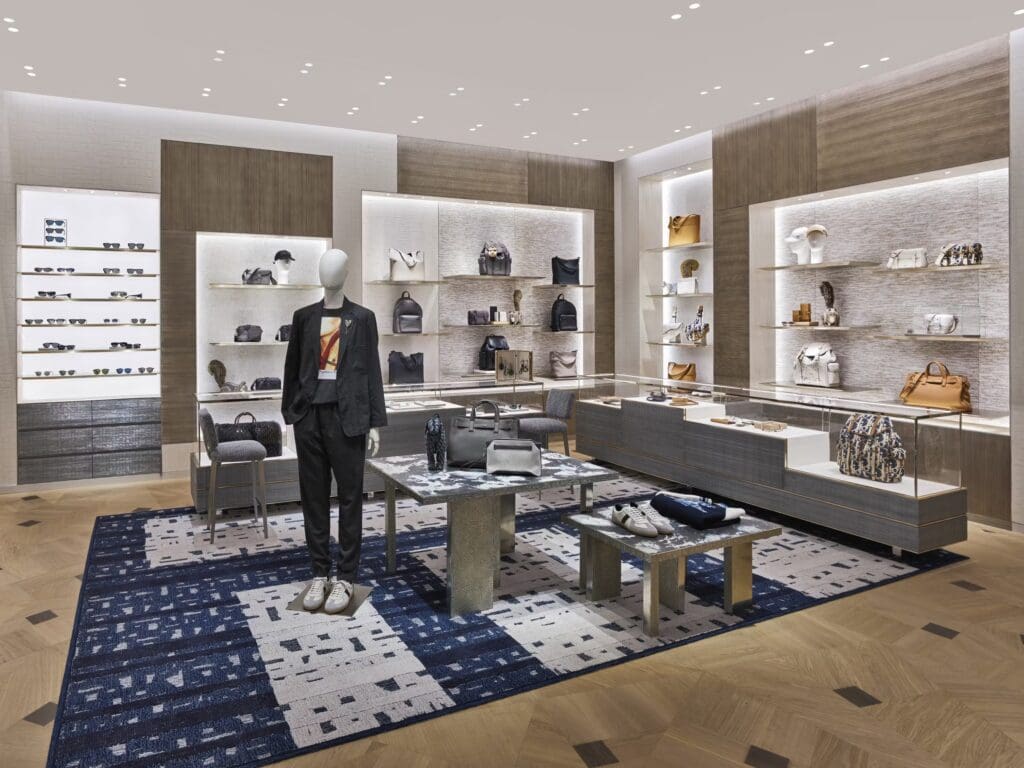
The top floor hides the most telling shift in luxury retail. Dior Spa New York, at 400 square meters, is not a bolt-on treatment room. It reads as a considered retreat for bespoke services rooted in the Maison’s know-how. The sound falls away as doors close, the air warms a degree, and skincare aromas replace the city’s metallic lift. For a modern man, that matters. The most valuable store experience today is time reclaimed, not another loud launch. It is hard to fake quiet.
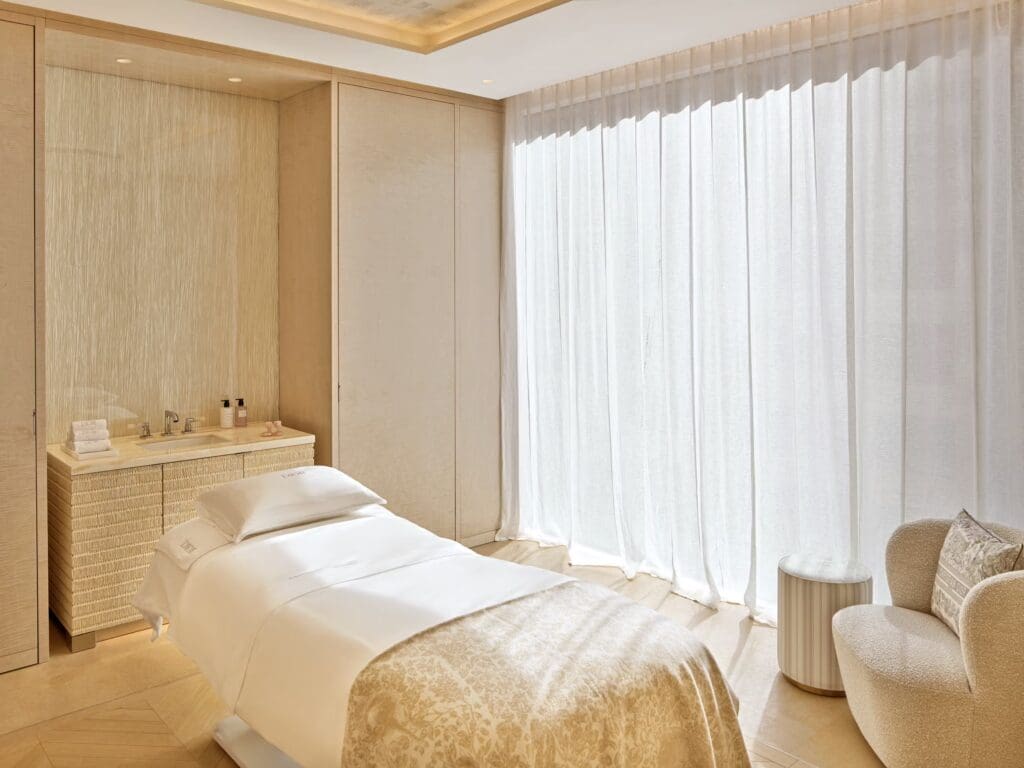
The windows speak to craft and conscience. Life-size tableaux in the bay windows celebrate Christian Dior’s affection for nature, made with upcycled textiles from the Ateliers. The result is not preachy. Fabric petals, stitched stems, and layered greens show technique and restraint. Sustainability here is framed through making, not messaging.
This opening lands in a New York retail landscape that has shifted from transaction to immersion. The best flagships now act as cultural spaces. They mix art, design and wellness to justify the visit. Dior’s version feels aligned with that reality. The store offers reasons to stay off your phone. You can study parquet patterns, trace the curve of a staircase, try a jacket in real daylight, or book a facial and leave ten beats slower. It is retail as cadence, not just commerce.
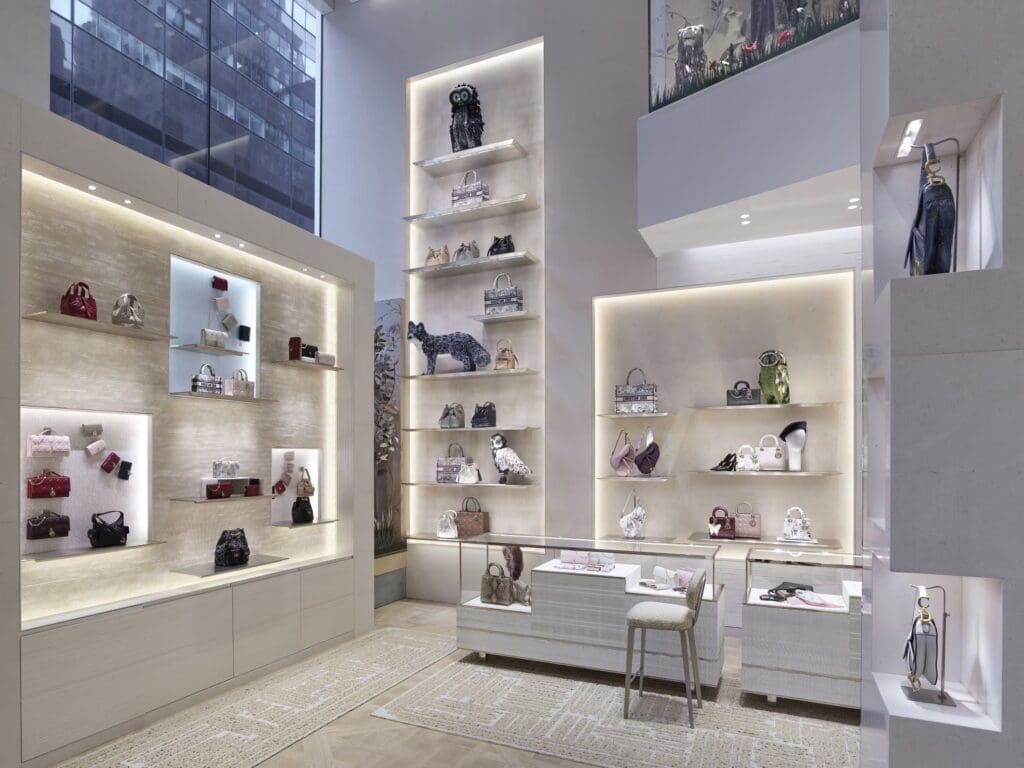
There is a business logic beneath the calm. Exclusive pieces and pre-launch product create urgency. Art installations generate images that live beyond the address. The spa builds repeat visits. All of that matters in a market where a phone can buy anything, but only a place can change how you feel. The risk is obvious. Experience-led stores can tip into theme park. Dior avoids the trap by keeping the palette gentle and the language of luxury familiar. Wood, stone, fabric, light.
For men navigating the space, the strategy is simple. Start with tailoring or outerwear in the men’s salons while the floor is quiet. Put the B27 on foot if you care about scarce editions, but judge it on comfort and proportion rather than a number. Walk the Colorama staircase and read the house through color. End at the spa and make the treatment the memory you take home. A leather bag will age. Good skin habits will carry further.
Dior’s new House gives New York a calm center point for French elegance. It honors history without reenactment and uses design to slow the pace without dulling the senses. In a decade defined by digital noise, a store that invites attention feels almost radical. The lesson is clear. Experience is the product, and this address understands how to deliver it with restraint.
Read more about high-end fashion here.